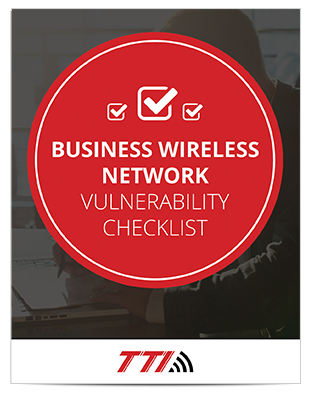Network Solutions Blog
Tips and trends in design and installation of wireless communications networks, wired infrastructure design and implementation, network peripherals and more.
These five trends will redefine campus networking in 2019.
Share
Columbia University’s Teachers College had a legacy IT infrastructure that couldn’t keep up with increasing demands. Here’s how TTI helped.
Share

We're sharing our advice with our loyal readers. Subscribe and download your free vulnerability checklist now!
Sophisticated analytics tools are all but a must in increasingly complex networking environments like colleges and universities.
Share
The end of Net Neutrality could be a concerning development for students whose education depends on fast, affordable internet connectivity.
Share
Cybersecurity | Higher Ed | Network Security | k12
Is your school district putting the necessary amount of attention on addressing the growing challenge of cybercrime in education? Recent attacks on schools throughout the country are serious warnings to tighten up your information security awareness efforts and develop a plan to ensure that your schools are protected.
Share
Campus Network | Higher Ed | Wi-Fi
There’s no denying that a strong campus WiFi network is critical in terms of attracting and retaining students in higher education. You’re dealing with a user base that expects to be connected via desktop PCs, laptops, smartphones, tablets, gaming devices and more -- plus the load of IoT-integrated technologies that campuses should be adopting to stay on the cutting edge and remain competitive among institutions. So, what if your campus WiFi network is actually failing?
Share
Major advancements in connectivity have brought today’s Internet users to a “point of no return” when it comes to the evolution of cyber threats. Every day, hackers become more skilled, finding new ways to attack systems and hold networks hostage. Because we now rely so heavily on the Internet for just about everything, there are increasing opportunities for security vulnerabilities to be exploited. For higher education IT professionals, addressing this reality is no small feat. Campus network security is more essential -- and more challenging -- than ever before. In far too many instances, colleges and universities are failing to ensure that their networks are truly secure. In fact, the 2017 Global Cybersecurity Assurance Report has revealed that the education sector scored second-to-last (at 64 percent) on risk assessment and security assurance among the rated industries.
Share
Today’s colleges and universities are challenged to provide more than just an education for matriculated students; they’re expected to deliver an entire experience. This experience should impact each student in a positive way, enabling them to learn, mature and evolve. Fortunately, advancements in technology and the Internet of Things have facilitated greater ways for institutions to cater to this experiential approach. As a result, higher education IT professionals have become a big part of the experience equation, charged with finding new ways to foster and enhance connectivity. From accessibility to security and everything in between, there is a wide range of progressive solutions that can be leveraged to elevate the student experience. One of those is advanced wayfinding.
Share
Technological advancement has transformed higher education. Today, connectivity is no longer a “nice-to-have.” It’s not something that campus administrators can afford to skimp on. Students and faculty need (and expect to have) available, reliable and secure campus Wi-Fi access from anywhere, at any time, using any device. In order to meet this expectation, many colleges and universities promote a "free love" environment for accessing their wireless network. They aim to make accessibility as easy as possible so as to accommodate users across campus, from the classroom to the dorm room. With this level of openness, however, comes significant security risks. As such, campus IT professionals are challenged to provide the feel of "free love" in a secure environment that doesn’t put the institution or its wireless users at risk.
Share